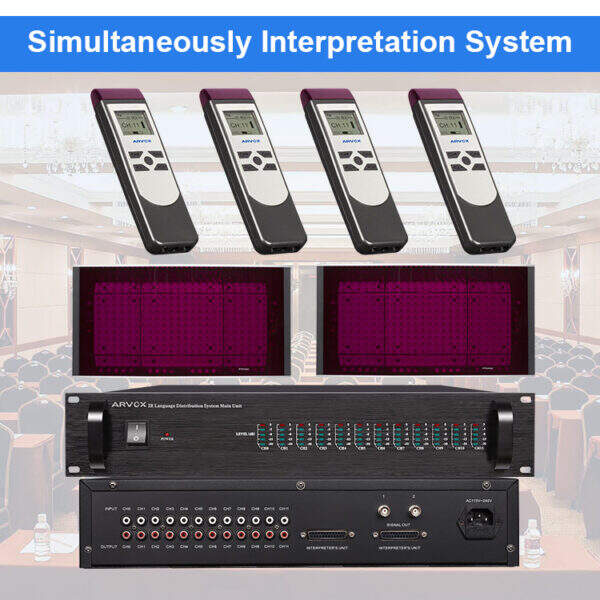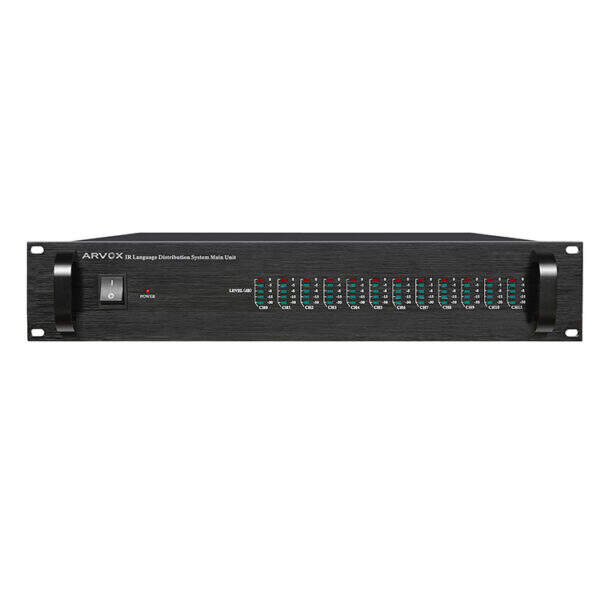Digital Signal Processing (DSP) is an essential technology in modern audio applications, providing crucial improvements to audio clarity and overall sound quality. By leveraging complex algorithms, DSP technology manipulates audio signals to enhance the listener's experience, allowing for precise control over various sound features. Key elements such as sampling, quantization, and filtering are fundamental to DSP, as these processes convert analog signals into digital format and allow for detailed audio manipulation. Furthermore, concepts like latency and signal-to-noise ratio are pivotal in determining DSP system performance. Industry leaders illustrate the benefits of DSP in large venues, showcasing its ability to maintain high-quality sound reproduction across various settings.
Optimizing frequency response in audio systems is critical, particularly in venues where clear speech intelligibility is a priority. DSP technology employs techniques such as equalization and adaptive filtering for frequency optimization, facilitating human speech clarity despite potential interference. Noise, especially in large venues, presents a major challenge, yet DSP solutions effectively mitigate these issues, enhancing speech intelligibility significantly. Real-world examples demonstrate successful frequency optimization; for instance, venues like conference centers where precise acoustic adjustments by acoustics specialists have yielded excellent results. Collaboration in venue design ensures that frequencies are adjusted favorably, enriching the auditory experience.
Noise suppression is essential in public address (PA) systems to ensure clear communication, especially in large venues. In this context, digital signal processing (DSP) comes into play by employing sophisticated techniques such as adaptive filtering and real-time noise cancellation to minimize unwanted background noise. For instance, modern DSP systems can detect and reduce reverberation and echo, providing a clearer sound in complex acoustic environments. Technological advancements, including the integration of machine learning algorithms, have led to more effective noise suppression methods, further enhancing public address clarity. Regular maintenance and updates of these systems are crucial to preserve their high performance and adapt to evolving acoustic challenges.
Real-time audio equalization is vital for ensuring high-quality sound in conference settings, where varied acoustic environments present unique challenges. This process utilizes DSP to adjust audio frequencies in live scenarios, thereby compensating for room acoustics and ensuring consistent audio quality. Its significance is underscored by the fact that well-equalized sound can enhance audience engagement and comprehension, which is supported by statistics from various studies. Tools like parametric equalizers and automatic feedback suppression have become invaluable in achieving favorable outcomes. Audio engineers often attest to the efficacy of DSP-based equalization in seamlessly adapting to changing acoustical conditions during live events.
Echo cancellation is a critical component in ceiling speaker arrays to ensure clear audio delivery in large venues. This process utilizes DSP algorithms that identify and mitigate echoes by adjusting sound waves to suppress disruptive reverberations. Successful implementations of echo cancellation have led to significantly improved audio clarity in numerous venues, such as conference halls and auditoriums. Emerging technologies are exploring adaptive echo cancellation and machine learning methods, promising more efficient and accurate systems. Tuning and maintaining these systems are crucial for sustaining their performance, emphasizing the necessity for regular calibration and updates in echo management solutions.
The RC-7000 Series IR Simultaneous Interpretation System excels in breaking language barriers with its 4 to 12 channel configurations, promoting effective multilingual communication at conferences and seminars. This system integrates cutting-edge DSP technology, which optimizes audio clarity by processing inputs to minimize interference and enhance the listening experience. Users have frequently praised its seamless operation in large venues, highlighting its role in significantly improving interpretative audio clarity. A testament to its market impact is seen through industry accolades that recognize its innovations in interpretation technologies.

These controllers, ranging from 4 to 12 channels, are essential elements in a DSP framework to manage multiple languages, ensuring clear and accurate translations. They cater to diverse venue sizes, from intimate meeting rooms to expansive conference spaces, providing customization and scalability. High adaptability and flexibility in installation highlight their suitability for varied applications. Users frequently report effective deployment and reliable performance across different environments, showcasing their essential role in maintaining interpretation quality.

The RC-7401 Single Channel Interpreter Microphone stands out with its focus on delivering clear, uninterrupted audio for professional interpreters. Enhanced by DSP, this microphone ensures precise audio capture, crucial for accurate translations. It’s lauded for its lightweight design and exceptional sound clarity, making it a top choice in real-world multilingual conferences. Specifications like flexible connectivity options and digital enhancements distinguish it in the competitive landscape. Professionals often endorse its reliable performance, further solidifying its position as a preferred tool in interpretation setups.
 Hot News
Hot News
Copyright © 2024 guagnzhou yingen electronics co,Ltd.All rights reserved Privacy policy